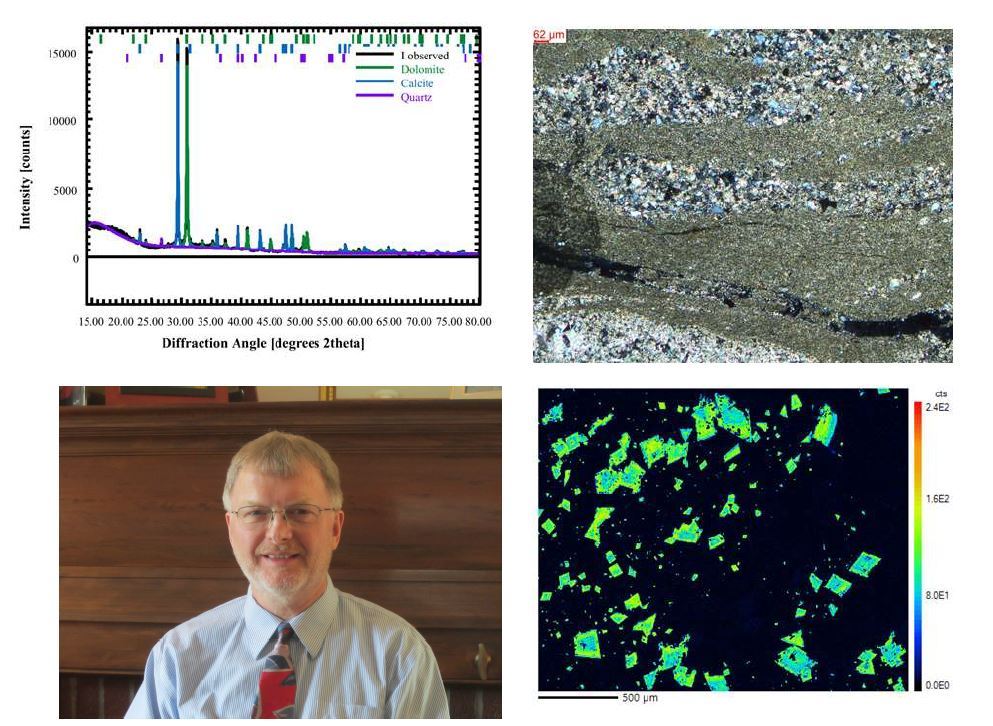Environmental Petrography Survey of Selected Upstate New York Bedrock Formations and Applications in Chemical Hydrogeology
This course is approved for 1 PDH
Speaker:
Jon S. Fox, P.G.
Fox Professional Geology, PLLC

Abstract:
Environmental petrography is used to characterize the mineralogy, chemistry, texture, structure, and porosity of geological materials using petrographic evaluation techniques including optical microscopy, x-ray powder diffraction (XRPD), scanning electron microscopy (SEM), energy dispersive spectroscopy (EDS), or electron probe microanalysis (EPMA). Environmental petrographic examination can assist drinking water source assessment efforts and environmental investigation and remediation efforts for contaminated environmental media including soil, sediment, bedrock, and groundwater. Several studies in the published literature over the past two decades have documented the occurrence of several reactive iron minerals that can facilitate the abiotic natural attenuation (ANA) of chlorinated organic compounds in environmental media under certain geochemical conditions. A recent study by others has also documented the ANA of hexavalent chromium via reduction reactions. Petrographic evaluation and geochemical modeling can be used to characterize reactive iron minerals and local geochemical conditions as part of an evaluation of the potential of a site’s geology to facilitate the in-situ degradation of these contaminates. Reactive iron minerals identified in the literature to date include a small group of iron sulfide, iron oxyhydroxide, phyllosilicate, iron phosphate, or iron carbonate minerals. Samples of selected bedrock formations from Upstate New York were collected and petrographically evaluated using polarized light microscopy, XRPD, SEM, and EDS. Elemental mapping was performed on two samples via EPMA with EDS and wavelength dispersive spectroscopy (WDS) to further evaluate and illustrate elemental and associated mineral distributions. The findings of our study document the occurrence of previously identified reactive iron minerals in several bedrock formations in Upstate New York and importantly also document the occurrence of additional minerals that are also likely to function as reactive iron minerals. A chemical hydrogeology case study involving an extensive plume of chlorinated organic compounds in bedrock groundwater is used to illustrate an application of petrographic evaluation and geochemical modeling, including the development and refinement of a hydrogeologic conceptual site model which illustrates upgradient, source area, and downgradient geochemical conditions and observed vertical and lateral trends.
Biography:
Jon received a BS in geology from SUNY Oswego and a master’s degree in geology and geochemistry from the University of North Dakota. He started his professional career in 1988 as a petroleum exploration geologist with Samuel T. Pees and Associates in northwestern Pennsylvania where he explored for and developed subsurface natural gas plays in southwestern New York State, northwestern Pennsylvania, and northeastern Ohio. He also performed oil and gas exploration consulting in the Williston basin in North Dakota while obtaining his master’s degree and working for the University of North Dakota as a research and teaching assistant. He transitioned to environmental consulting in 1993 with ERM where he performed and later led environmental site investigation efforts across Upstate New York for over 27 years. He worked with collaborative project teams using techniques including applied geology, geochemistry, hydrogeology, geophysics, petrographic examination, and statistical analysis of geologic data. He is a licensed professional geologist (NY and PA) and a voting member of ASTM’s Committee D18 (Soil and Rock) and Subcommittees D18.01 (Surface and Subsurface Characterization) and D18.21 (Groundwater and Vadose Zone Investigations). Jon started Fox Professional Geology, PLLC in 2021 with a primary focus of assisting environmental investigation and remediation practitioners through the application of mineralogy, petrography, and chemical hydrogeology methods. He is also a Visiting Scholar with SUNY Oswego’s Department of Atmospheric and Geological Sciences where he collaborates with faculty and student researchers.
Registration
Non-PDH registration is free.
1 PDH Certificate registration is $10.
Microsoft Teams meeting
Join on your computer or mobile app
Click here to join the meeting
Join with a video conferencing device
131516023@t.plcm.vc
Video Conference ID: 119 039 931 4
Alternate VTC instructions
Or call in (audio only)
+1 347-690-2327,,505095121# United States, New York City
(888) 305-0633,,505095121# United States (Toll-free)
Phone Conference ID: 505 095 121#
Find a local number | Reset PIN
Learn More | Meeting options